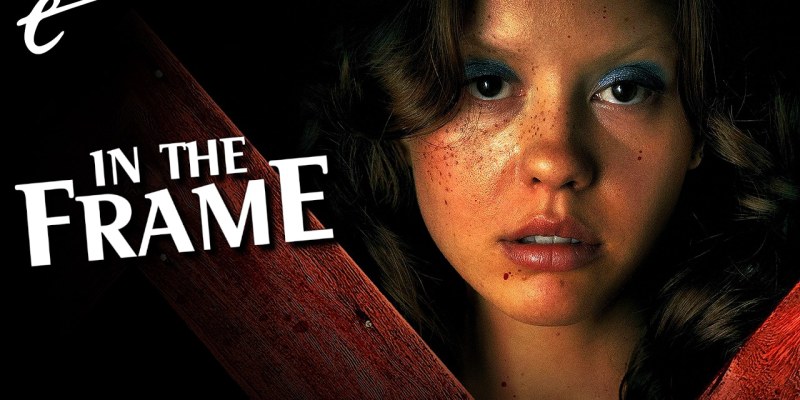Ti West’s X feels like a more fitting companion piece to The Texas Chain Saw Massacre than the actual sequel that was released earlier this year, David Blue Garcia’s Texas Chainsaw Massacre.
Of course, West evokes The Texas Chain Saw Massacre. Like Tobe Hooper’s iconic and classic American horror, X is set against the backdrop of 1970s Texas. The starting premise of both movies finds a van full of young urbanites adventuring into the rural heartland, a journey that will inevitably end in horror. West even lifts key moments from The Texas Chain Saw Massacre, opening with police surveying the scene of an atrocity and featuring an early sequence at a local service station.
While X is clearly a love letter to horror cinema in general and includes overt shoutouts to films like Psycho and The Shining, its primary frame of reference remains The Texas Chain Saw Massacre. This is a story of a group of young people who wander into the vast heartland and quickly find themselves thrown into a brutal conflict with local residents who house their own dark secrets. It’s not literally a remake or a sequel, but it is a film that exists in conversation with that classic horror.
What is interesting about X is that West seems to fundamentally understand The Texas Chain Saw Massacre in a way that most of the film’s sequels do not. In some ways, the fact that it exists completely outside that franchise allows it much greater perspective and freedom. Horror sequences often reduce the original films to empty iconography and signifiers, checklists of familiar elements to be recycled and repeated to suggest the comforts of familiarity.
The sequels to The Texas Chain Saw Massacre are beholden to the imagery of the original. They must feature a combination of recognizable elements: Leatherface, chainsaws, cannibalism, skin masks. The later sequels rarely engage with what these elements meant in the context of the original film. Cannibalism is part of The Texas Chain Saw Massacre because it reflects the horrors of 1970s America; it is part of Leatherface simply because it was a part of The Texas Chain Saw Massacre.

Because X isn’t part of an established brand, West’s film doesn’t have to include checklist elements, unless they fit the narrative. The result is a film much truer to the spirit of The Texas Chain Saw Massacre than many of its sequels.
Like The Texas Chain Saw Massacre, X is a film that is about the consumption of flesh, albeit in a more metaphorical way. The film follows a crew led by Wayne Gilroy (Martin Henderson), who are inspired by the success of Debbie Does Dallas to make their own Texas-based porn film. X repeatedly draws attention to the capitalist nature of the work. “People pay a lot of money to look at what God gave me,” boasts actor Bobby-Lynne (Brittany Snow). Wayne explains, “It’s just business.”
The central dynamics of X neatly mirror those of The Texas Chain Saw Massacre. Both films tell the story of a young and progressive group of city slickers who find themselves thrown into horrific conflict with the local population. Wayne has rented a small cabin from aging property owner Howard (Stephen Ure) but doesn’t count on the reaction that Howard’s wife Pearl (Mia Goth) will have to the promiscuous activities of the younger film crew on their land.
As with The Texas Chain Saw Massacre, it is a generational conflict between an emerging younger demographic and more traditional and conservative social class. Some of the sequels to The Texas Chain Saw Massacre touch on this central conflict, but only in the most superficial of terms. Garcia’s Texas Chainsaw Massacre essentially devolves into a series of tired jokes about Generation X trying to “cancel” Leatherface (Mark Burnham). Astute social commentary, it is not.

The original Texas Chain Saw Massacre used its central conflict as a metaphor for some of the tensions in contemporary American society, particularly in the aftermath of the turbulence of the 1960s. The Texas Chain Saw Massacre has been read as an allegory for Vietnam and Watergate, as a story about the murder and torture of a young idealistic generation. It’s a movie that has very specific things to say, even beyond the maniac waving the chainsaw.
X is similar. It offers a more general comment on the divide between youth and old age, suggesting that at least some of this generational conflict is rooted in frustration, in the anger of an older generation that resents being reminded of their lost youth. Bobby-Lynne justifies her lifestyle by arguing, “One day we’re going to be too old to fuck, and life’s too short.” X repeatedly comes back to Howard and Pearl’s reaction to the liberated youth – Howard’s impotence and Pearl’s unrequited desire.
West’s engagement with The Texas Chain Saw Massacre goes beyond tapping into some of its core themes and exploring them in new ways. In many ways, X is a movie about The Texas Chain Saw Massacre, or at least a commentary on how it – and films like it – radically altered the cultural landscape. It’s a very meta and self-aware piece of work, one that positions The Texas Chain Saw Massacre as a formative moment in the evolution of contemporary American independent cinema.
While the title of X obviously refers to the now-defunct age rating afforded to provocative films, it also suggests that this is a movie about a point of crossover or intersection. Wayne recruits a young filmmaker named R.J. Nichols (Owen Campbell). Nichols solutes porn as proof of “the power of independent cinema” and promises that he’s going to give the group’s porno “a certain sense of the avant-garde, like they’re doing in France.”

This doesn’t seem too unbelievable. There was a point in the 1970s when pornography was a thriving independent film scene. While exact numbers for the box office are hard to come by, the recorded grosses of Deep Throat place it as one of the most financially successful movies of 1972. Directors like Francis Ford Coppola broke into the industry by shooting porn. Those sorts of movies enjoyed high-profile glitzy premieres.
Porn existed outside the studio system. Filmmakers could churn out movies in the genre cheaply and quickly, and they were assured to make a profit. The same is true of the horror movies of the era, which operated under similar constraints and presented similar opportunities. Both genres also benefited from the emerging home media market towards the end of the decade. “Finally, people are going to get to see what they desire in their own homes, free of judgment,” Wayne boasts.
Through editing, West suggests American independent cinema was caught at a crossroads between those twin impulses – between porn and horror, sex and death. Scenes from the gang’s cheesy porn movie are intercut with horrific variations on the same premise. In the film, Jackson Hole (Kid Cudi) joins Bobby-Lynne for a wholesome glass of lemonade in a scene that ends as one might expect. Meanwhile, Maxine Minx (also Goth) has a much more intense glass of lemonade with Pearl.
X argues that the future of American cinema inevitably belonged to The Texas Chain Saw Massacre and Halloween rather than to Deep Throat or Debbie Does Dallas. In its own sly and postmodern way, X is a movie about The Texas Chain Saw Massacre triumphing over Debbie Does Dallas and, in doing so, setting the agenda for the next few decades of American independent filmmaking. It’s an ingenious concept for a horror, one deeply engaged with The Texas Chain Saw Massacre.
In the film’s closing moments, Sheriff Dentler (James Gaylyn) is confronted with Nichols’ recovered camera. “What do you think is on it?” a deputy asks. Dentler responds, “Well, by the looks of everything, I’d say one goddamn fucked up horror picture.” In the end, horror wins.
